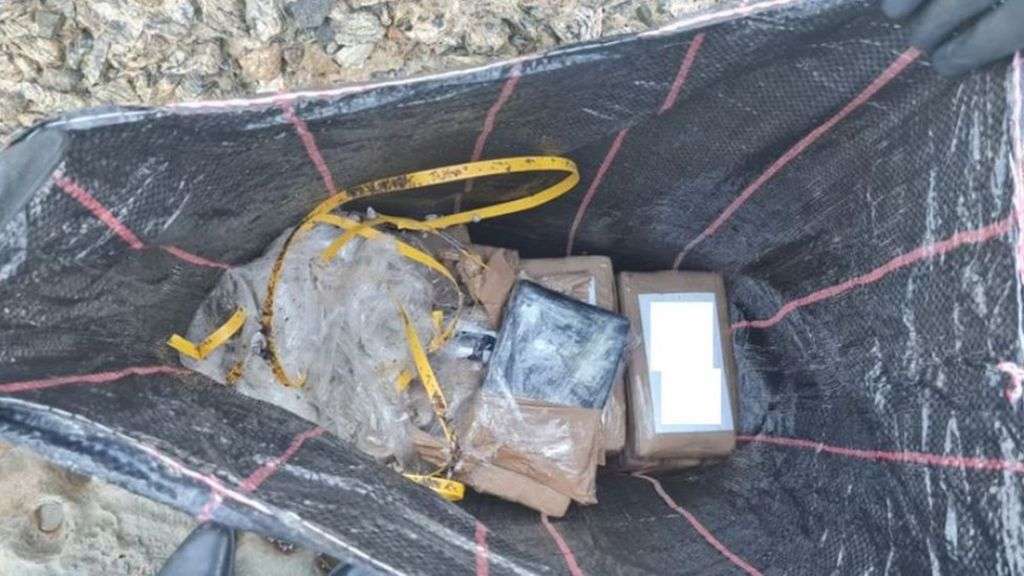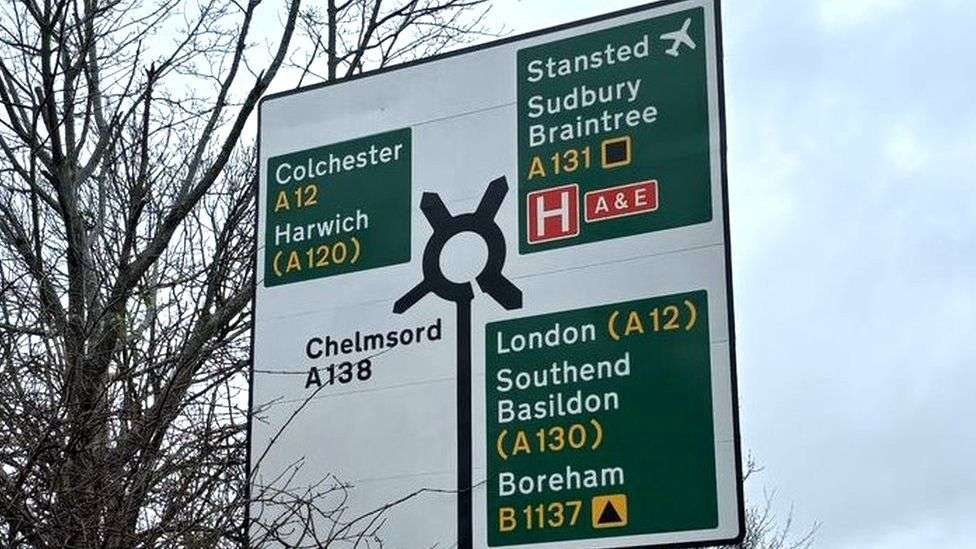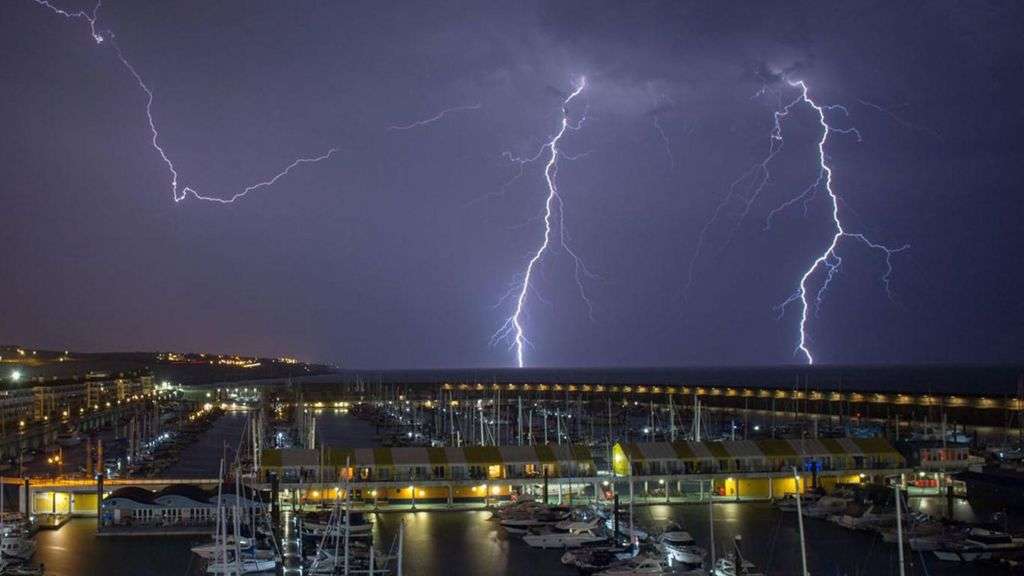Five plastic-wrapped packages believed to contain cocaine have washed up on beaches in Sydney, deepening a long-running drug mystery. Found by beachgoers at Freshwater and Curl Curl on Monday, the parcels - 5kg in total - were seized by police. They say it is part of a massive shipment of cocaine which has been washing up in bits since December. Australians are the highest per capita users of cocaine in the world, followed by Britain, according to the OECD. "As inquiries continue, the public are reminded to report any suspicious package to authorities," NSW Police said in a statement on Tuesday. More than 250kg of cocaine has been found along the New South Wales seaboard since the first package was spotted in the Central Coast region - about 90km (55 miles) north of Sydney - three days before Christmas. Since then, packages - most small but some weighing up to 39kg - have been found at more than ten beaches over a 500km stretch of coast.
A lifeguard filmed himself plucking one from the waves at Bondi on New Years Day, and most recently, another parcel was found on Valla Beach in the mid-north coast in March.
It is unclear how the bricks ended up in the ocean.
In January, NSW Police told the Australian Broadcasting Corporation they believed the drugs had originated in South America and likely made their way to Australia via a cargo ship.
"Sometimes we do see where items are deliberately tossed into the ocean to be picked up by another vessel," State Crime Command director Jason Weinstein said.
Some of the found bricks were covered in barnacles, which detectives have analysed and say indicate the packages were in the water no more than six weeks before being discovered.
Australians consumed 16.5 tonnes of methamphetamines, cocaine, heroin and MDMA in the year ending August 2023, according to the national law enforcement agency - representing a 17% increase in usage from the previous 12-month period.








